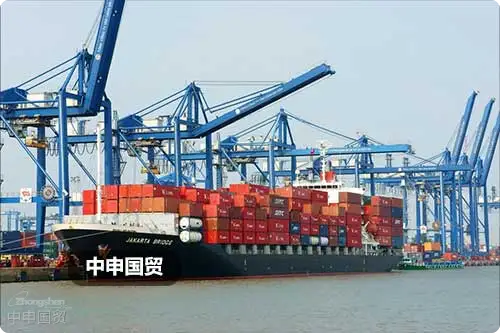- Shanghai Zhongshen International Trade Co., Ltd. - Two decades of trade agency expertise.
- Service Hotline: 139 1787 2118

SemiconductorEquipment ImportsThree Major Industry Characteristics
The global semiconductor equipment market size is expected to exceed $150 billion in 2025, but import環節存在high technical sensitivity, multiple regulatory levels, and stringent logistics conditionsThree key features. The new U.S. export control regulations (2025 revised edition) include equipment with process nodes below 28nm under control, while China Customs has raised the accuracy requirement for semiconductor equipment classification to 99.8%. These changes directly affectImport Representationthe companys service capability requirements.
Analysis of key nodes in import procedures
Professional agency companies must control the following core aspects:
- Pre - classification stage
- HS codes must be precise to 10-digit tariff numbers (e.g., 8486.2050)
- Professional translation of technical parameter specifications
- License management
- Processing cycle for dual-use item import licenses reduced to 15 working days
- Integration with U.S. export license (BIS) electronic declaration system
- special clearance procedures
- Unpacking inspection rate for vacuum packaging equipment reduced by 30%
- Standardized template for anti-vibration transport certification documents
Five golden criteria for selecting agency companies
- Qualification verification system
Verify whether they possess: Customs AEO Advanced Certification, hazardous material transportation qualifications (for etching equipment), and Ministry of Commerce technologyimport and exportfiling certificates. New requirements for 2025 include specialized liability insurance for semiconductor equipment (coverage no less than 150% of equipment value).
- Industry experience profile
Must provide: Specific operation cases of lithography machines/deposition equipment/inspection equipment in the past three years, cooperation records with manufacturers like ASML/Applied Materials, and wafer fab project service experience
- Customs technical team
Core metrics: Possess more than 5 certified classification specialists, 3 electromechanical product pre-valuation specialists, and experts familiar with the Semiconductor Equipment Import Compliance Guidelines (2025 Edition)
- Special logistics solutions
Key capabilities: Real-time monitoring of constant temperature and humidity containers (temperature fluctuation ±1°C), transportation standards with vibration resistance above level 10, 48-hour emergency customs clearance response mechanism
- Risk management module
Must include: Technical parameter confidentiality protection system, intellectual property border protection plan, U.S. Entity List scanning system (update frequency ≥2 times per month)
Practical cost optimization strategies
Professional agency companies can:
- Utilize free trade agreement rules of origin (e.g., tariff reductions for Japanese equipment under RCEP)
- Apply for major technical equipment import tax incentives (requires providing equipment technical grade certification)
- Design phased import plans (aligned with equipment installation and commissioning progress)
A case study of a 12-inch wafer fab project shows that professional agency services reduced overall import costs by 18% and shortened equipment transit time by 22 working days.
2025 industry trend forecast
Import agency services will demonstrate:
- Technical compliance consulting revenue share increasing to 40%
- 300% growth in temporary import guarantee business during equipment commissioning periods
- Import value appraisal error rate requirement for used equipment ≤0.5%
It is recommended that enterprises establish a dynamic evaluation mechanism for agency companies, conducting quarterly checks on their customs credit ratings, case update databases, and technical personnel turnover to ensure adaptability to the rapidly changing trade regulatory environment.
Related Recommendations
? 2025. All Rights Reserved. Shanghai ICP No. 2023007705-2  PSB Record: Shanghai No.31011502009912
PSB Record: Shanghai No.31011502009912










